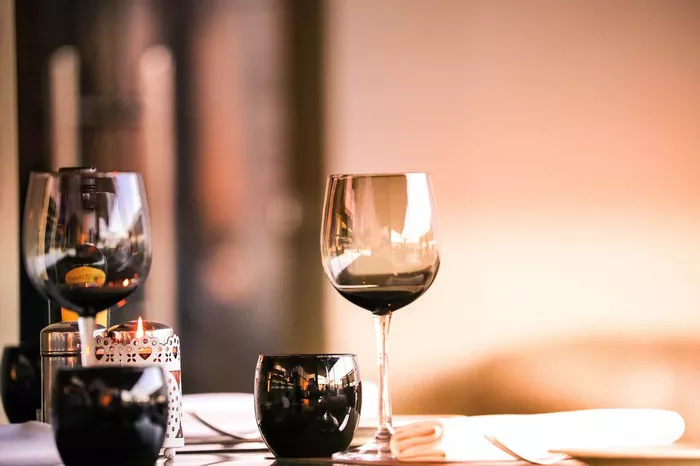Champagne mixed with orange juice is a classic cocktail known by many names, each carrying its own historical and cultural significance. Whether you call it a Mimosa, a Buck’s Fizz, or simply Champagne and orange juice, this delightful concoction has stood the test of time as a symbol of elegance, indulgence, and celebration. In this article, we’ll explore the origins of this beloved beverage, its variations, and the etiquette surrounding its consumption.
Origins of the Mimosa: A Marriage of Citrus and Bubbles
The Mimosa, as it is most commonly known in the United States, is a brunch staple enjoyed by many. But where did this delightful blend of champagne and orange juice originate? The history of the Mimosa traces back to early 20th century Paris, where it gained popularity among the bohemian crowd frequenting the city’s cafes. The cocktail’s name is said to be inspired by the vibrant yellow flowers of the mimosa plant, evoking the drink’s sunny hue and light, refreshing taste.
In the United Kingdom, a similar cocktail known as the Buck’s Fizz emerged around the same time. The Buck’s Fizz is typically made with a higher proportion of champagne to orange juice compared to the Mimosa, resulting in a drier and more potent drink. Despite these differences, both the Mimosa and the Buck’s Fizz share a common origin in the early 20th century European cocktail culture.
The Classic Mimosa Recipe: Simple Yet Elegant
Crafting the perfect Mimosa requires just two primary ingredients: champagne and freshly squeezed orange juice. While some recipes may call for additional ingredients such as triple sec or grenadine, purists argue that simplicity is key to allowing the flavors of the champagne and orange juice to shine.
To make a classic Mimosa, start by chilling your champagne flute in the refrigerator or freezer for at least 15 minutes. Once chilled, pour equal parts champagne and orange juice into the glass, taking care to tilt the flute slightly to preserve the bubbles. For an added touch of elegance, garnish your Mimosa with a twist of orange peel or a fresh strawberry.
Variations on the Traditional Mimosa
While the classic Mimosa recipe remains a favorite among brunch-goers, there are countless variations that offer a unique twist on this timeless cocktail. One popular variation is the Poinsettia, which substitutes cranberry juice for orange juice, resulting in a festive red hue perfect for holiday gatherings.
For those looking to add a bit of spice to their Mimosa, the addition of ginger liqueur or a splash of spicy ginger beer can provide a refreshing kick. Alternatively, swapping out orange juice for other citrus fruits such as grapefruit or blood orange can offer a tart and tangy twist on the traditional recipe.
Etiquette and Serving Suggestions
Whether enjoyed at a leisurely brunch or as a pre-dinner aperitif, there are a few key etiquette tips to keep in mind when serving and consuming Champagne mixed with orange juice. First and foremost, it’s important to use quality ingredients, including freshly squeezed orange juice and a well-chilled bottle of Champagne or sparkling wine.
When pouring a Mimosa, aim to fill the glass no more than two-thirds full to leave room for the bubbles to mingle with the juice. Avoid stirring the cocktail excessively, as this can cause the Champagne to lose its effervescence. Instead, gently tilt the glass from side to side to mix the ingredients while preserving the bubbles.
In terms of serving vessels, Champagne flutes are the preferred choice for presenting a Mimosa, as their tall, narrow shape helps to showcase the drink’s sparkling effervescence. However, if Champagne flutes are not available, any tall, narrow glass will suffice.
Cultural Significance and Occasions for Enjoyment
Beyond its delicious taste and refreshing qualities, Champagne mixed with orange juice carries significant cultural symbolism and is often associated with special occasions and celebrations. In many cultures, the act of sharing a Mimosa or Buck’s Fizz is seen as a gesture of hospitality and friendship, making it a popular choice for gatherings such as bridal showers, baby showers, and brunch weddings.
In addition to its association with celebrations, the Mimosa has also become synonymous with leisure and relaxation, thanks in part to its popularity as a brunch cocktail. Whether enjoyed on a sunny patio overlooking the ocean or in the cozy confines of a bustling cafe, sipping on a Mimosa evokes feelings of indulgence and escapism.
Health Considerations and Alternatives
While Champagne mixed with orange juice is undeniably delicious, it’s worth noting that this cocktail can be relatively high in sugar and calories, particularly if made with sweetened orange juice or additional liqueurs. For those looking to enjoy a lighter alternative, consider substituting sparkling water or soda water for Champagne to create a refreshing mocktail.
Alternatively, incorporating fresh fruit purees such as peach, raspberry, or mango can add natural sweetness and flavor to your beverage without the need for added sugars or syrups. Experimenting with different fruit combinations can also allow you to customize your mocktail to suit your personal taste preferences.
Conclusion: A Toast to Timeless Elegance
In conclusion, Champagne mixed with orange juice holds a special place in the world of cocktails, thanks to its delightful flavor, elegant presentation, and cultural significance. Whether you prefer to sip on a classic Mimosa, a bold Buck’s Fizz, or a creative variation of your own making, there’s no denying the appeal of this beloved beverage. So the next time you find yourself raising a glass in celebration, consider toasting with a Champagne and orange juice cocktail, and savoring the timeless elegance it brings to any occasion. Cheers!


